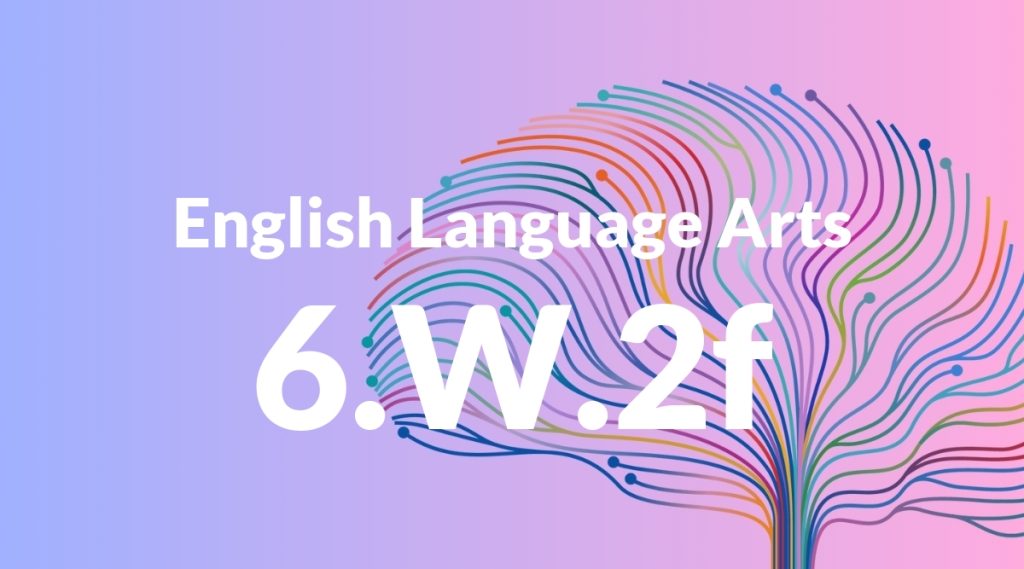Standard: 6.W.2f – Provide a concluding statement or section that follows from the information or explanation presented.
Grade level: Grade 6
Subject: English Language Arts
Domain: Writing
Teacher Overview
This standard emphasizes the importance of concluding statements or sections in student writing. It ensures that students can provide a sense of closure and completeness to their work, which is crucial for effective communication and writing coherence. Students should understand how to structure an essay with an introduction, body, and conclusion. They should be able to present their ideas clearly and logically.
After mastering this standard, students will be able to write more sophisticated conclusions that not only summarize their points but also reflect on their significance and connect to broader themes.
Common Misconception 1
A common misconception is that a conclusion is merely a summary of the essay. This is incorrect because a conclusion should also provide closure and link back to the introduction, reinforcing the main points.
Intervention 1
Use graphic organizers to help students plan their conclusions, ensuring they include a summary of key points, a restatement of the main idea, and a final thought or call to action.
Common Misconception 2
Another misconception is that a conclusion is unnecessary if the main points are clear. This is incorrect because a conclusion helps to reinforce the main ideas and leaves a lasting impression on the reader.
Intervention 2
Provide examples of effective conclusions and discuss why they work. Encourage students to practice writing conclusions for different types of writing assignments.
Prerequisite Knowledge
Students should understand how to organize their writing with a clear introduction and body paragraphs. They should also know how to present information logically and cohesively.
Subsequent Knowledge
Students will develop the ability to write more complex and nuanced conclusions, integrating their own insights and reflections. They will also learn to connect their conclusions to broader themes and real-world implications.
Instructional Activities
- Have students write a short essay and then craft a strong concluding paragraph.
- Use mentor texts to analyze effective conclusions.
- Practice writing conclusions for different types of writing, such as narratives, expository essays, and persuasive essays.
- Engage in peer review sessions focused on improving conclusions.




